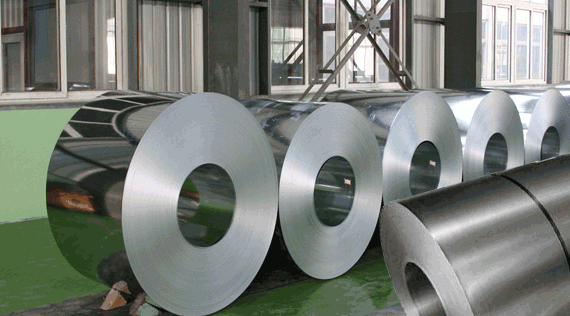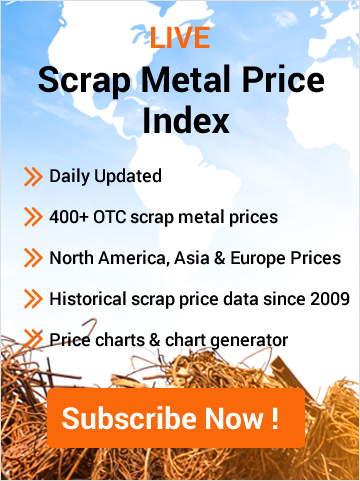Turkey
Prices for HMS 1&2 80:20 scrap in Turkey as of November 14, 2025, were $355.2/t, up 0.2% from the previous week and 2% higher than offers a month earlier (October 10).
The key challenge for the market was weak demand for rebar, which forced Turkish mills to adopt a wait-and-see approach and actively push for lower prices. This pressure was exacerbated by competition from imported steel billets from China and the CIS, which were offered at $455-460/t CFR and below, making them an attractive alternative. In addition, expectations of strong economic stimulus in China, which could have supported prices for Asian products, did not materialize, further limiting buyers’ willingness to pay high prices for scrap.
At the same time, scrap suppliers strongly resisted concessions, citing high freight rates and rising prices at the docks. Moreover, the weakening of the euro against the dollar contributed to maintaining high dollar offers.
As a result, despite the weakness of the finished product market, the unmet demand of Turkish mills for December supplies and the firm stance of suppliers led to a gradual, albeit slight, increase in prices.
At present, the market has probably reached its ceiling. Given buyer resistance and the expected weakening of freight rates after the holidays in the US, prices will remain stable or adjust slightly downward in the range of $350-355/t until the end of the year. Further significant growth is unlikely under current conditions.
EU
On the EU market, scrap prices showed a general decline during the period. In Germany, E3 scrap lost 8.9% in value between October 10 and November 14, settling at €255/t, while in Italy (E3), scrap prices rose 0.8% over the month (to €300/t), but fell by 4.8% over the past week, as the first week of November saw prices rise to €315/t, the highest level since the end of August.
The key factor determining pricing in Germany was weak domestic activity and overfilled warehouses at metallurgical plants. Low demand from steel mills due to weak orders led to a steady decline in prices throughout October (€10-15/t) and early November (€5-10/t). Even a slight increase in exports did not save the situation.
In contrast, the Italian market showed positive dynamics under the influence of the recovery of export activity in Western Europe and rising prices for Turkish imported scrap. From the end of October, Italian prices began to rise, peaking in early November, as traders held back raw materials in anticipation of an increase. This growth was supported by strong demand for exports from Benelux and German ports to Turkey and North Africa (Morocco, Egypt), which pushed export prices above domestic levels. The weakening of the euro against the dollar also played an important role.
United States
On the East Coast of the United States, scrap prices rose by 4.1% over the month to $315.5/t, the highest since April.
At the beginning of the period, the domestic market experienced a price correction for some grades due to excess supply, particularly from Canada, and plant downtime for maintenance. However, further price declines were prevented by supplier resistance and a seasonal slowdown in scrap collection. Steady demand for finished rebar, supported by infrastructure projects, also provided support for prices.
The key catalyst for price growth on the East Coast was steady demand from Turkey. Despite resistance from Turkish buyers and competition from imported steel billets, the need to secure volumes for December shipments forced them to make concessions. Export support provided a solid foundation for domestic prices.
Domestic prices stabilized by November, reaching what many participants considered to be the price bottom. The seasonal reduction in scrap supply, fewer working days due to holidays, and the return of plants after maintenance supported positive sentiment.
Stable dynamics or slight price increases are expected until the end of the year. Due to high export demand and seasonal supply constraints, the market is unlikely to see a significant decline by the end of the year.
China
The Chinese scrap market was characterized by contradictory dynamics: domestic prices fell by 2.4% to $332.44/t between October 10 and November 14, while import prices rose by 3% to $340/t CFR. This discrepancy reflected fundamental problems in the domestic market.
The main factor behind the decline in domestic prices was a sharp jump in supply after the end of Golden Week, which led to a rapid filling of steel mill warehouses. This influx of material occurred against a backdrop of weak demand for finished steel and low profitability for electric arc furnace producers, who continued to operate at a loss. Factories were forced to lower purchase prices to cope with inventory pressure and margin compression, and some, faced with high electricity costs and the approach of winter maintenance, switched to production cuts. In particular, China reduced steel production to a four-year low in October.
At the same time, prices for imported scrap rose, supported by domestic market strength in Japan (a key supplier). However, imported scrap remained significantly more expensive than domestic scrap (the difference reached $50/t), which made it unattractive to Chinese buyers and led to minimal activity in foreign trade.
Given the expected further decline in production due to the approaching winter maintenance and continued weakness in domestic steel demand, pressure on domestic prices is likely to persist, limiting any significant recovery until the end of the year.
Courtesy : https://gmk.center/



